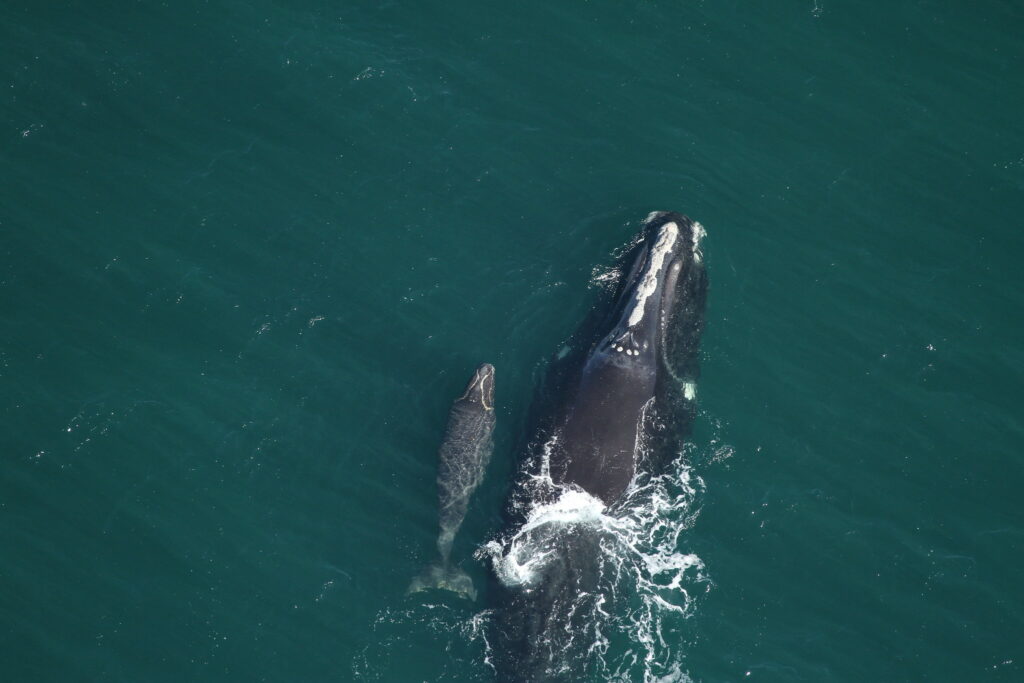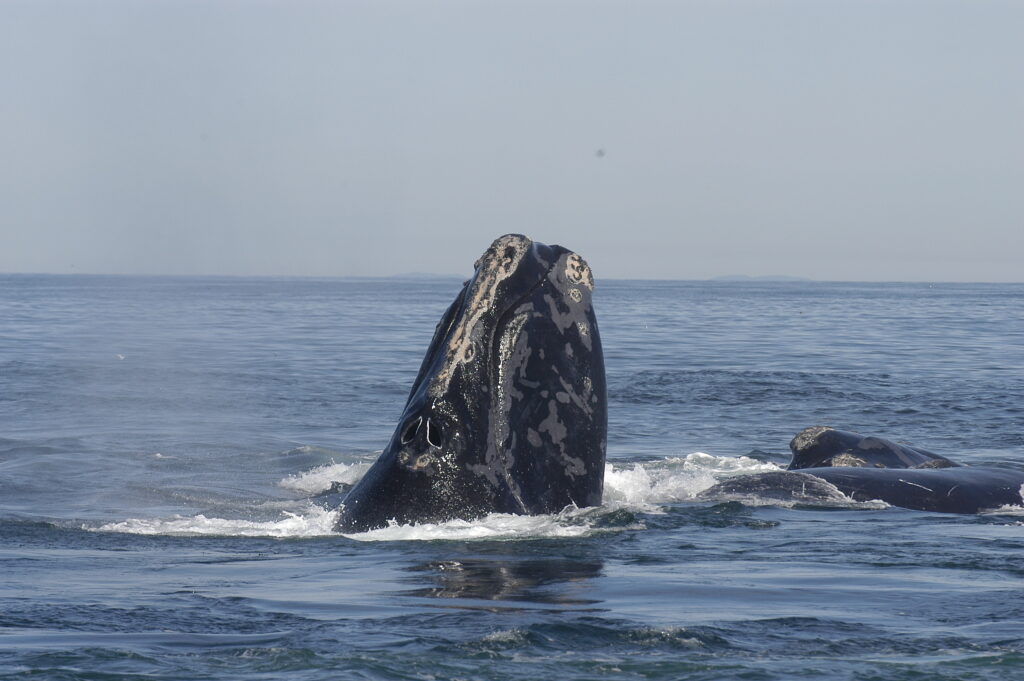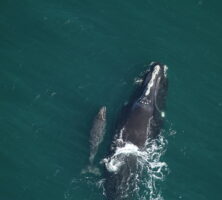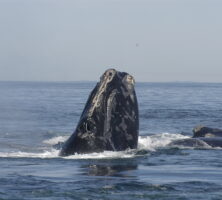The North Atlantic right whale (Eubalaena glacialis Muller), one of three species of right whales, is Georgia’s official state marine mammal. It was so designated because the only known calving grounds for the species lie within fifteen miles of the Georgia and north Florida coastline. The North Atlantic right whale is also the world’s most endangered large whale, with fewer than 350 individuals remaining. Scientists estimate that unless threats from ship strikes and fishing-gear entanglements can be substantially reduced, the species will become extinct within 200 years.

Image from FWC Fish and Wildlife Research Institute
Presently, most North Atlantic right whales spend the spring and early summer off the coast of Massachusetts in the southern Gulf of Maine. Later in the summer, they migrate north to the Bay of Fundy, which lies off the coasts of Maine and the Canadian provinces of New Brunswick and Nova Scotia in the northern Gulf of Maine. Important whale behaviors in the Bay of Fundy include feeding on dense patches of copepods and breeding. In the late fall the near-term pregnant females and a few others migrate south to the relatively calm, cool, and predator-free waters off Georgia and north Florida, where, from December to April, calving occurs. The cows, calves, and others then return north to complete the migratory cycle.
Both the right whale’s name and its endangered status are due to hunting. For more than 900 years, humans hunted this whale because it was “the right whale to kill.” The right whale lived near shore; it swam slowly; when it died, it floated; and when processed, it yielded valuable products, including whale oil for lamps and baleen for corset stays. By the early twentieth century the North Atlantic right whale had been virtually eliminated from the waters near Europe and its distribution reduced to the waters off the East Coast of the United States and southern Canada. In 1935 an international ban on right-whale hunting was initiated, but the number of North Atlantic right whales has not substantially increased since then.
While hunting is no longer a threat to right whales, other human activities are. The most dangerous of these are ship strikes (accounting for more than nineteen fatalities since 1970) and entanglement in gill nets, lobster lines, and other fishing gear (more than 60 percent of right whales show signs of entanglement). Other factors include water pollution and disturbance from whale watching and noise. Human-influenced climate change may also affect right whales by changing the distribution and abundance of their prey.

Image from Moira Brown
An international and ecumenical effort is under way to reduce these threats to right whales. In the United States some laws have been passed and regulations adopted to help. Measures in effect for Georgia include designation of the coastal waters south of the Altamaha River and out to fifteen miles as a “critical habitat” for the species, ship reporting requirements, restrictions on the use of gill nets, and prohibitions on recreational right-whale watching. Other measures are described in the recovery plans for the North Atlantic right whale prepared by the National Marine Fisheries Service and the Canadian Department of Fisheries and Oceans.








